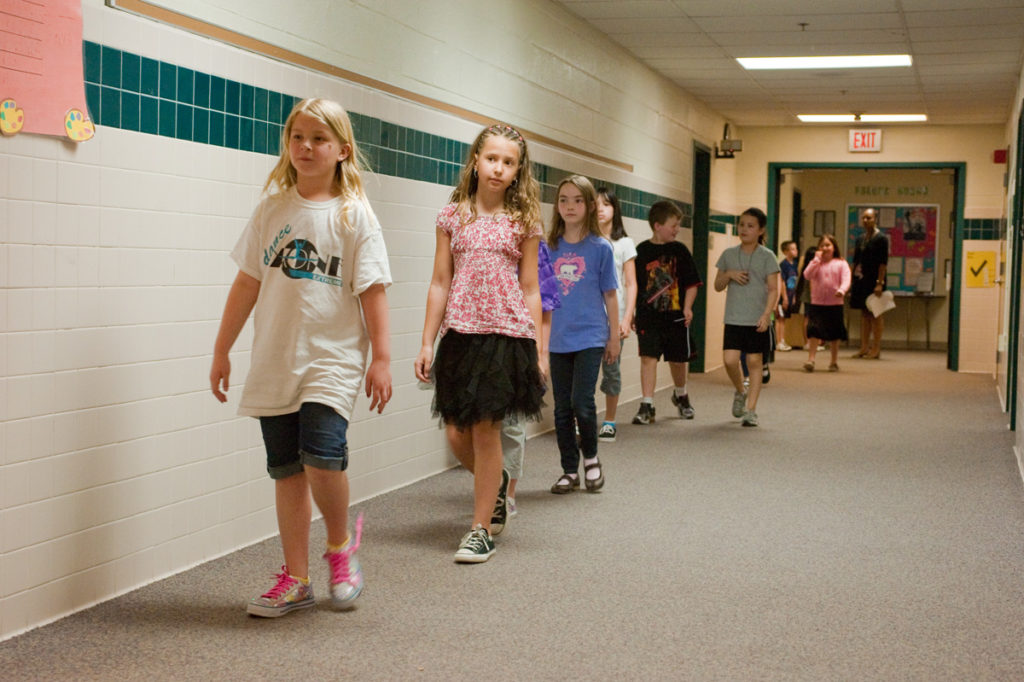
 Teachers and administrators at Kensington Avenue Magnet School view the Responsive Classroom approach as a foundation upon which they can build. “We look at each new initiative through a Responsive Classroom lens,” says Sheree Nolley, a faculty member for twenty-three years and currently the school’s Responsive Classroom coordinator.
Teachers and administrators at Kensington Avenue Magnet School view the Responsive Classroom approach as a foundation upon which they can build. “We look at each new initiative through a Responsive Classroom lens,” says Sheree Nolley, a faculty member for twenty-three years and currently the school’s Responsive Classroom coordinator.
That mindset continues now as Kensington moves forward with the Common Core. “Our embedded approach to Responsive Classroom gives us confidence, enthusiasm, and the knowledge that our students will continue to succeed academically and socially.”
“Children and teachers are comfortable trying new things and taking risks because the Responsive Classroom approach gives them the underlying skills they need to be successful.”
—Sheree Nolley
That way of thinking has developed over almost twenty years of Responsive Classroom implementation at this public urban school, which has been acclaimed for its positive climate and effective partnerships with students’ families. For years, the school has ranked in the top tier on their district’s Organizational Health Inventory, and Kensington students consistently meet expectations on state and district assessments. Staff believe that consistent, sustained use of Responsive Classroom practices at the school has led to this academic success.
Nolley recalls that when staff first started learning about Responsive Classroom, it was just one of several initiatives teachers were juggling, including new statewide curriculum frameworks. Initially, they struggled to manage what felt like too much at once. “The turning point came when we understood that we could rely on Responsive Classroom structures as a framework for our teaching, which freed us to focus on the content.”
Kensington teachers began using Responsive Classroom practices in classrooms in 1994. The school has grown and sustained schoolwide implementation since then through its steadfast commitment to training and support for staff. Here are some highlights from the journey that embedded the approach into this school’s culture.
Three cohorts of teachers are trained and begin using Responsive Classroom practices in their classrooms. Four Kensington teachers move through the process of becoming certified Responsive Classroom trainers for the Springfield School District. In 1997, teachers Tina Valentine and Maureen Russell are designated Responsive Classroom facilitators by the school. Under their guidance, Responsive Classroom practices become an integral part of Kensington’s school culture.
Kensington completes the rigorous Federal Magnet Grant application process and becomes an International Baccalaureate/Primary Years School. Tina Valentine works with the curriculum alignment specialist to integrate Responsive Classroom teaching practices with the new program.
Leadership changes, with long-time Kensington teacher Margaret Thompson becoming principal and Sheree Nolley taking on responsibility for Responsive Classroom implementation. The Responsive Classroom initiative continues at Kensington without interruption during these transitions.
Kensington is recognized at the Responsive Classroom Schools Conference for its accomplishments in schoolwide implementation.
Sheree Nolley, serving now as the International Baccalaureate Coordinator and the Responsive Classroom Facilitator, continues to support the school through ongoing professional development, book studies, and coaching.
Several Responsive Classroom DVDs and multimedia kits feature staff and students at Kensington Avenue Magnet School. Take a quick video field trip to this Responsive School by watching the thank you video we gave them after filming at the school in 2011.
To learn more about bringing the Responsive Classroom approach to your school or district, please contact our school services team. Call 800-360-6332, ext. 143 or email [email protected].